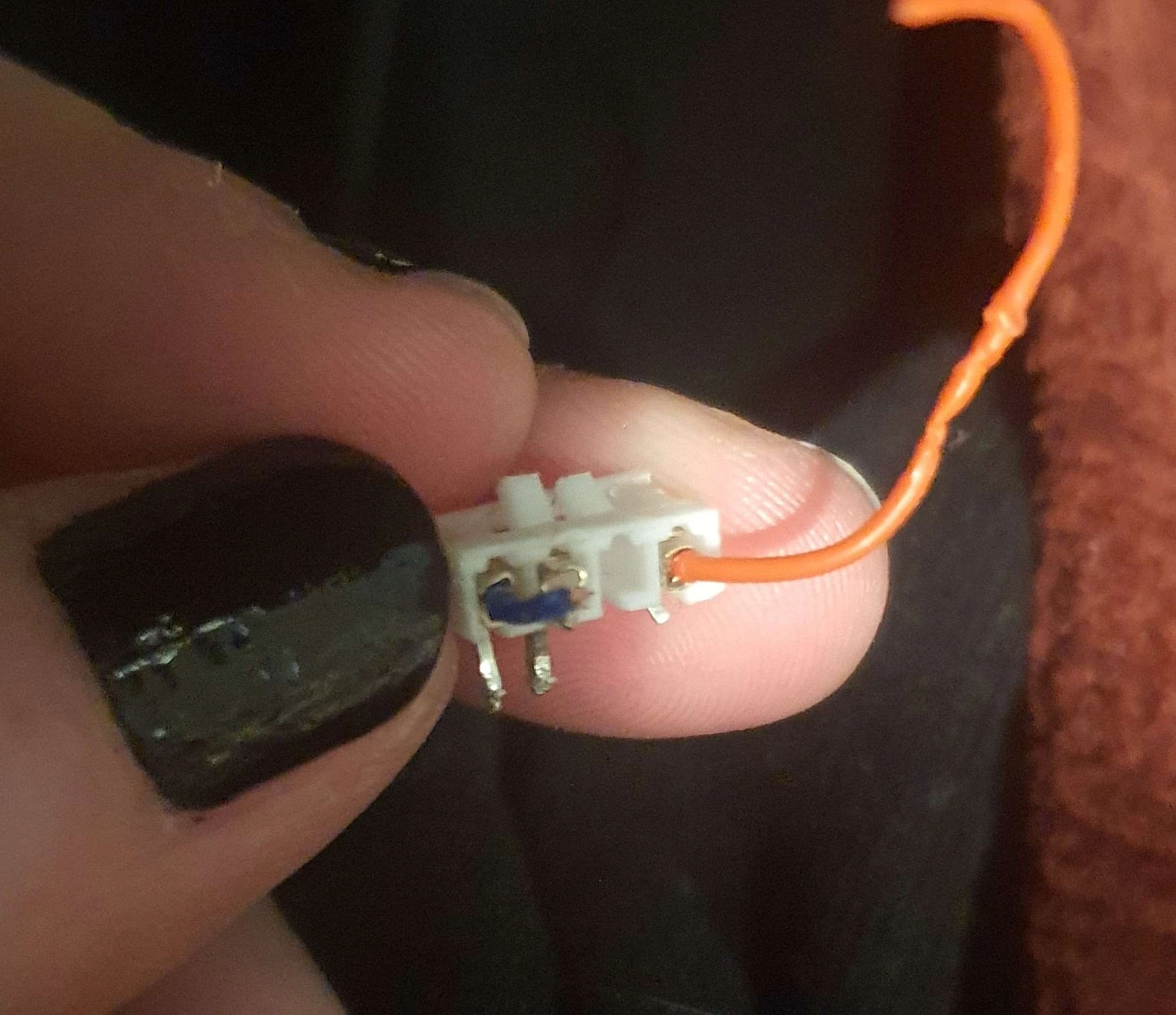This was a switch that got its wires pulled out. I learned how to desolder today in order to remove it from the little switch board and now there's three holes where this used to be. Does this component have a name, because I'm wondering whether I can just get a replacement one like this. There are lots of tools and supplies at the makerspace I used, but I need to know what I'd be looking for.
Alternatively, what else might I be able to use to do this? I suppose I could just trim and strip the wires and shove those through and solder, but that seems...crude? I don't know. I'd prefer something with pins because I practiced soldering and desoldering using some broken electronics I had, and I'm more confident with pins than something so freeform.
Thanks for your time.

